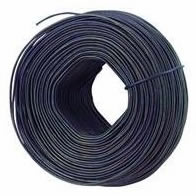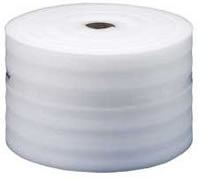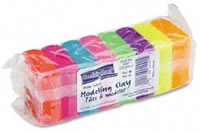The choice of materials for the mold is critical to the successful completion of the project. Choose the wrong mold materials and the mold could leak and this would be detrimental to the strength of the concrete countertop. As well, choosing the wrong materials could make it next to impossible to release the concrete countertop from the mold, causing it to crack and/or break.
Note: You should be able to purchase all of the materials for the mold from a good building supply outlet. Most of the big-box home improvement centers will not have the rebar or wire mesh necessary for the project.
- 3/4 inch laminate, coated both sides, MDF (for the example project one sheet is sufficient). (The laminate coated MDF will be used to create the sides and bottom of the mold). (When purchasing the laminate coated MDF ensure that there are no scratches, gouges or other defects in the surface of the material as any defects will show up in the finished concrete).
- 27 feet of #3 (3/8 inch) rebar, as shown in Figure I. (You can substitute 1/4 inch rebar, however it may be difficult to find).
- 21 square feet of 6 gauge, 6 inch by 6 inch wire mesh (remesh). (Purchase flat sheets, not rolls). (You can substitute 4 inch by 4 inch wire mesh)
- 1 roll of 16 gauge soft annealed tie wire, as shown in Figure J.
- 2 piece of 1/16 inch thick aluminum sheet, 2 1/2 inches by approximately 8 inches long. (The aluminum sheet is used to divide the concrete countertop into two pieces. The exact length of each piece of aluminum will be determined by the position of the sink in the countertop).
- 1 tin of Varathane spray (The aluminum sheet used to divide the countertop into two pieces will bond to the concrete if it is not coated with Varathane. (Shellac can be used as a substitute for Varathane).
- 1 1/4 inch drywall screws
- 2 inch drywall screws
- 2 rolls of quality blue (painters) masking tape
- 1 foot of 1 1/2 inch Schedule 40 PVC pipe. (The PVC pipe is used to provide the holes in the mold for the faucet and other accessories that mount through the concrete countertop).
- 6 inch by 6 inch piece of 3/4 plywood. You may need more plywood if you have a lot of countertop penetrations.
- 1/8 inch thick sheet packing foam, as shown in Figure K.
- 1 roll of clear cellophane tape.
- 1 inch thick rigid foam insulation. (Pieces of the rigid foam insulation are used to lift the rebar and wire mesh from the bottom of the mold. It is removed once the rebar and wire mesh are fastened into position. It is also used to support the concrete countertop when it is flipped over after it has cured, in order to release it from the mold.)
- Modeling clay, as shown in Figure L, to cover the screw heads of the screws that will need to be removed in order to release the concrete countertop from the mold.
- 2 tins of 3M Super 77 spray adhesive
- 2 cartridges of 100% black silicone caulk.
- 1 container of denatured alcohol to clean the base of the mold and the excess caulk prior to pouring any concrete.

Figure I - Rebar

Figure J - Tie wire

Figure K - Packing foam

Figure L - Modeling clay
Continued - Making the mold for your concrete countertop
How to Make Concrete Countertops - Index
